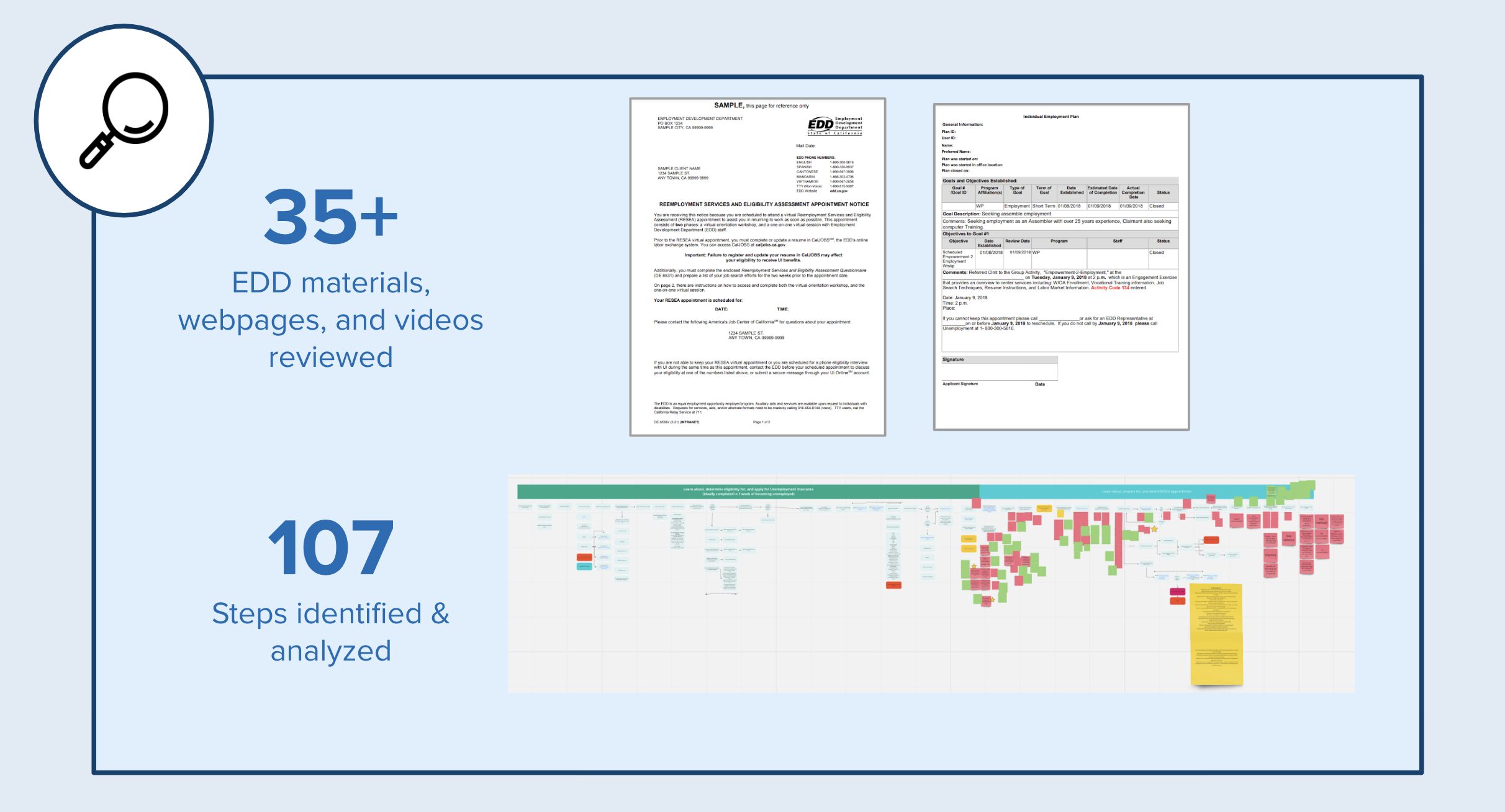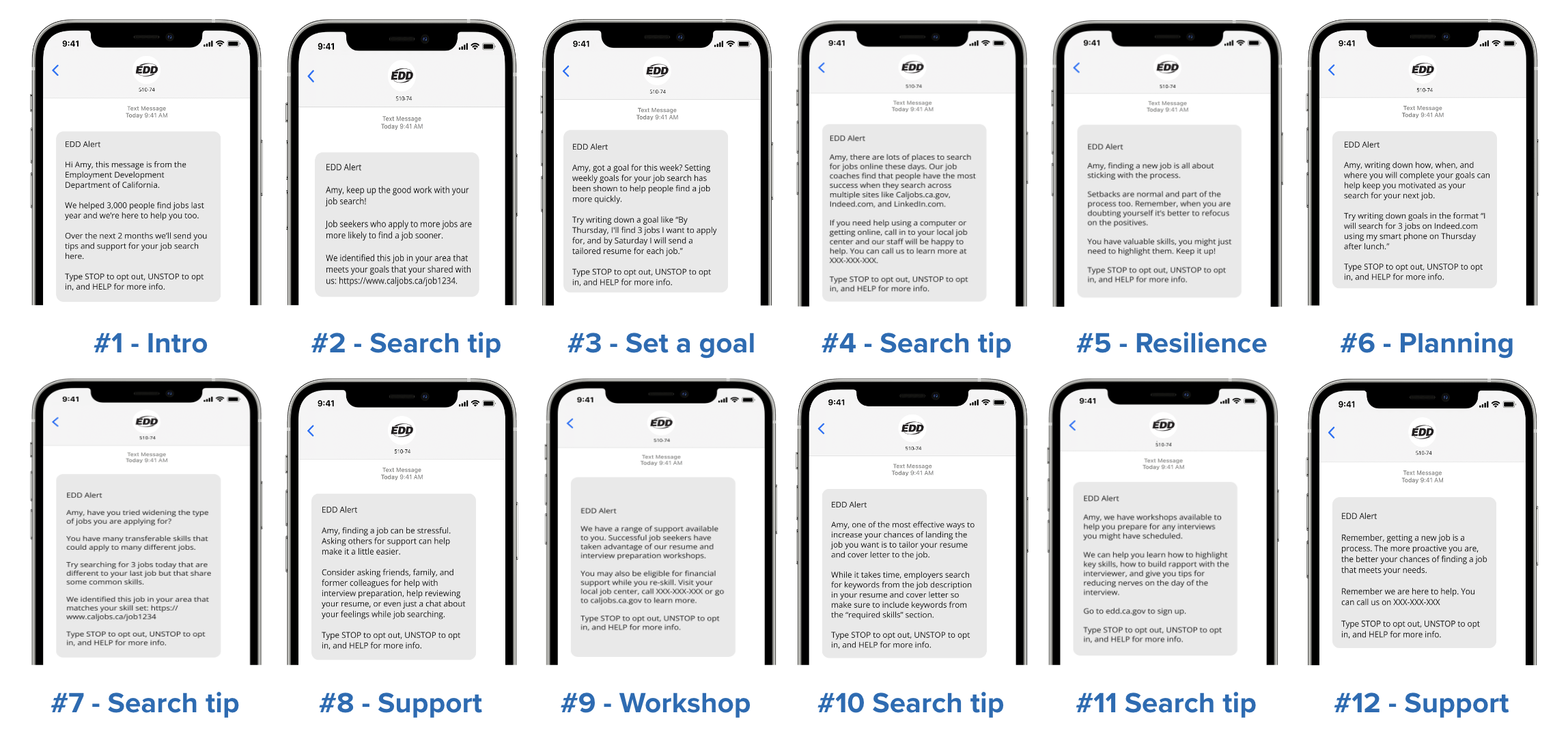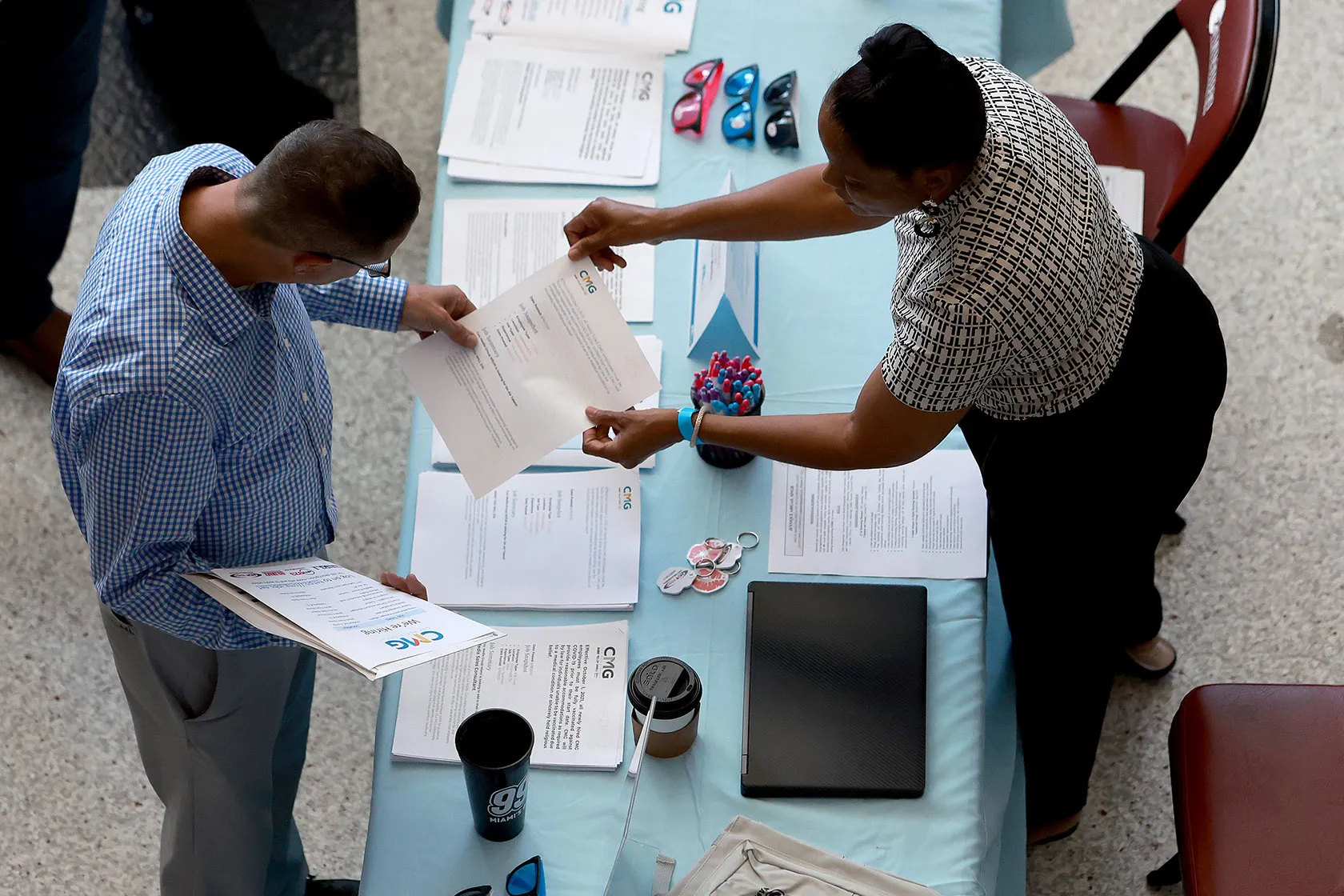Imagine you’ve just been laid off. You’re lost in a sea of questions about next steps and which jobs to apply for, and your motivation is running low.
On your ex-employer’s advice, you apply for unemployment benefits through the Employment Development Department (EDD). Good news: you’re eligible for unemployment benefits. Phew! You start receiving an unemployment check.
Soon, an EDD letter arrives informing you that you’ve been selected for the Reemployment Services and Eligibility Assessment (RESEA) program. You’ve never heard of it. Is it worth your time? Before you can answer, you get distracted by applying for jobs and the letter is forgotten.
Then, a second letter arrives: you’ve missed your mandatory RESEA appointment and may lose your access to benefits. This is scary.
The Challenge
Confronting Unemployment: A Behavioral Problem
The RESEA program provides job search assistance, resume and interview workshops, and career counseling for unemployed Californians. Its ultimate goal: to help people find jobs faster. But it’s not optional. If you’re selected to join, you must comply – or stop receiving an unemployment check. But despite this, roughly a third of selectees do not attend the initial session. This puts them at risk of losing their benefits and deprives them of the RESEA program’s help in finding a job.
Irrational Labs partnered with the Labor Workforce Development Agency (LWDA), which oversees the EDD’s work, to solve this. Our goals were to teach the LWDA how to apply behavioral science to:
- Encourage more people to attend their RESEA session so that they can benefit from the services available to them;
- Encourage more people to take advantage of follow-on services like training or job-search assistance;
- Additionally motivate job seekers during the difficult job-search process to help them successfully find meaningful employment.
The Solution
Redesigning Communication: Behavioral Interventions
Our team used the Behavioral Design process to figure out not only why people were missing these required sessions, but also how to improve their likelihood of getting value out of RESEA (read: getting a job ASAP). This Behavioral Design process resulted in us redesigning the end-to-end enrollment communication, including in ways intended to boost motivation.
Step 1: Behavioral Diagnosis
In this step of our process, we study what knowledge already exists about behavior change and the context (or environment) of decision-making. Translation: We study what people are actually doing.
- Document review: We reviewed 35+ EDD forms, letters, leaflets, webpages, and videos to identify how jobseekers mental model of EDD was built ahead of, during, and after the RESEA appointment;
- Literature review: We reviewed and summarized insights from 10 academic articles (mostly meta-analyses) to identify the factors that drive attendance at job seeker service appointments and job program success in general;
- Ethnographic observation: We attended four online workshops, including a resume preparation workshop, an interview preparation workshop, and others to understand the services offered to job seekers;
- Site visits: We conducted two site visits to American Job Centers of California and used a structured observational guide to identify barriers in the physical environment that may reduce the likelihood of job seekers availing of services;
- Qualitative interviews: Finally, using customized structured interview guides we interviewed a total of 29 staff members and job seekers to understand what they saw as the key barriers to availing of services and finding meaningful employment.
Step 2: Identify the Psychologies at Play
Using insights collected during our visits and from interviews, we overlaid the behavioral barriers and key psychologies that emerged during each step on top of the customer journey. The resulting behavioral map uncovered the following challenges:
- Mental model: Some job seekers had a poor mental model of RESEA and what it could offer them.
- Friction: There was a high amount of friction for job seekers to attend RESEA and related services.
- Lack of benefits: The invite letter does not make salient the benefits of attending RESEA & follow-on services.
- Lack of personalization: The services offered to some job seekers at their RESEA session were not personalized.
- Lack of motivation: Job seekers were in an emotionally vulnerable state. Getting rejected from one or two jobs does not motivate people to apply for more!
- Salience: Important information, communications, or action steps were easy to miss.
Step 3: Behavioral Design
So, what did we do to try and help the LWDA to improve communications with job seekers – and ultimately help them find meaningful employment?
Redesigned the Enrollment Journey
Is the problem that people don’t want to participate in RESEA, or are they just busy and forget? Or perhaps they read the letter, but don’t understand that it requires action? Behavioral science suggests that it’s not just about wanting to attend – complexity and forgetting matter.
The Irrational Labs team redesigned the RESEA appointment notice letter that job seekers receive when selected for the program to more clearly communicate the benefits. Our redesign included over 25 behaviorally informed changes that made the key information more salient. We made salient the consequences of not showing up, why the program could help, and plan-making elements.

Finally, we drew on behavioral insights to design three new appointment reminder text messages. Reminders have been shown to increase show-up rates – but they are most effective when behaviorally designed. Simple changes, such as including the Zoom link for the appointment in the text message, would remove friction from the sign-up process, making it easier for people to attend and participate in the program.
Redesigned the Job Search Journey
Research has shown that sending job seekers text messages containing links to jobs they might be a good match for and checking in with them by phone increased job applications by 600%¹. In addition, meta-analyses have shown that job programs that include motivation and resilience-building elements are much more successful in helping people get back to work.
With these factors in mind, we designed a cohesive 12-part campaign of motivational text messages designed to encourage people to access services and apply for jobs over a 6-week period. The text message campaign would mean that job seekers receive two texts per week encouraging them to engage in motivating exercises like goal setting (#3), planning (#6) and self-reflection to build resilience (#5). At the bottom of these messages are links to jobs that seem like a good match for the job seekers to drive job applications (#2).
Given that EDD staff already send text messages to job seekers and often follow up by phone, this could provide a scalable option to help people apply to more jobs.
 Our motivational text message campaign
Our motivational text message campaign
Next Steps
Our collaboration with the LWDA to increase job seeker participation in RESEA yielded important insights that could have broader implications for other government programs.
The LWDA is working internally to identify the next steps for the project and assess implementation planning, including the possibility of an RCT. We also presented our findings to other employment agencies at a recent Workcon conference and have been sharing our learnings more broadly to influence practice. We’re excited about the potential. Applied broadly, solutions like this could transform job search support services and also help increase participation in other important programs.
Looking to increase engagement with or participation in your program, product, or service? Contact us at [email protected].
¹The 600% increase was from a low base where few job seekers were applying for jobs in the control condition.
